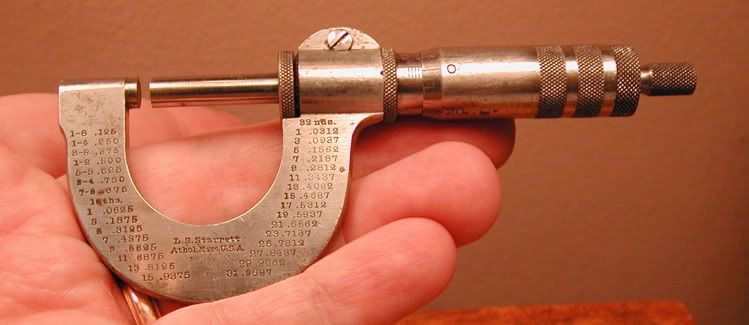rivett608
Diamond
- Joined
- Oct 25, 2002
- Location
- Kansas City, Mo.
Game time.... lets play what is different about this 1" Starrett micrometer....... it is from early in the 20th century and I'm thinking there are 3 features, 2 little details and something unusual......





 pre patent unit? We can see what a pain it would have been to setup the frames so that all the spanner holes would be at 1 - 5 O'clock (with speeder facing you) to facilitate loosening the spindle assembly. Please keep in mind all our other early "Type 1" units do not have this feature.
pre patent unit? We can see what a pain it would have been to setup the frames so that all the spanner holes would be at 1 - 5 O'clock (with speeder facing you) to facilitate loosening the spindle assembly. Please keep in mind all our other early "Type 1" units do not have this feature.